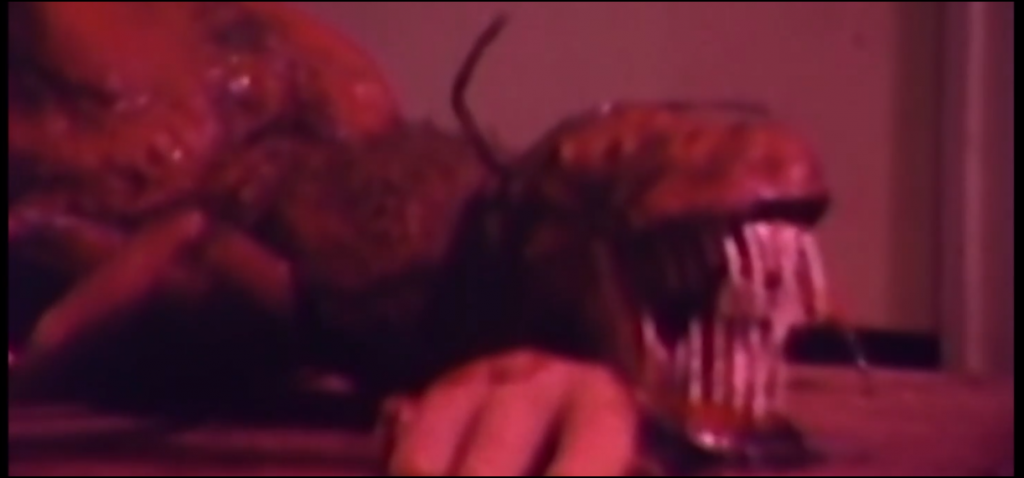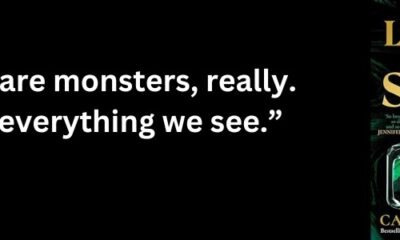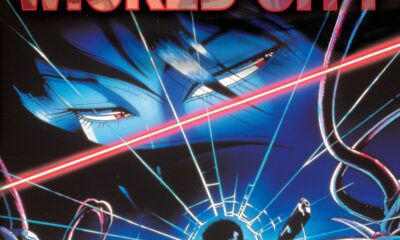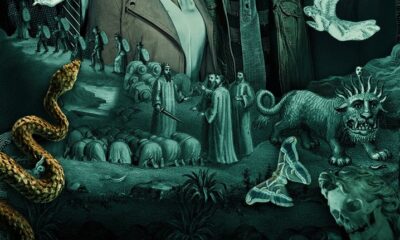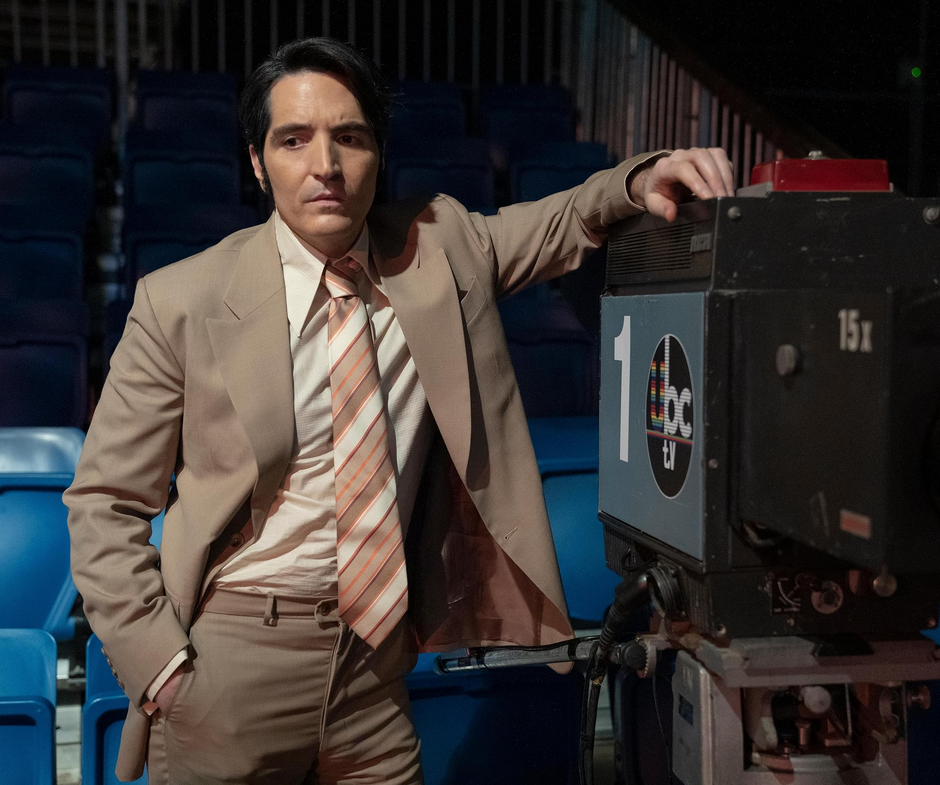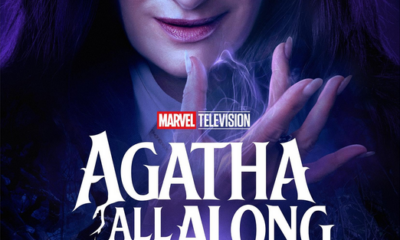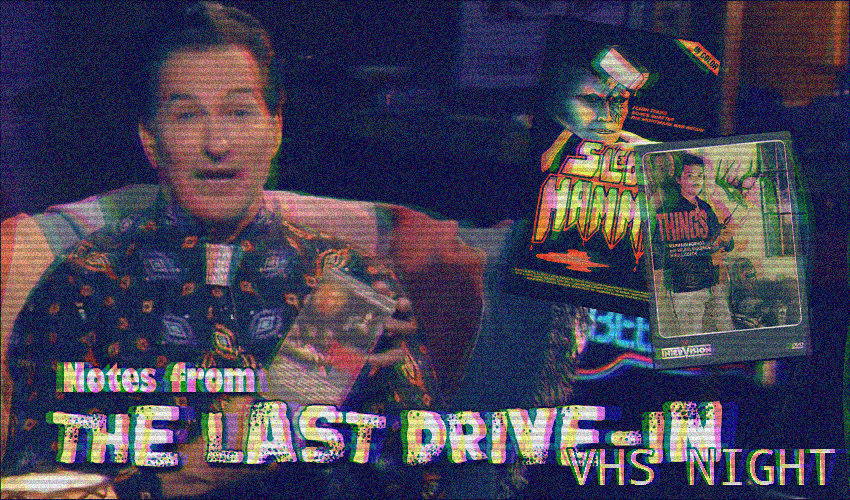
Notes from the Last Drive-In: S3E8 – Sledgehammer and Things
More Videos
Published
3 years agoon
Welcome back to Notes from the Last Drive-In, where we discuss the 8th episode of season 3, featuring the cult “classic” films Sledgehammer and Things. I will be very critical of the movie selection for this episode – the films presented were amateurish, bad, and hard to watch movies. With that being said, though, they are also movies I feel I can treasure, and there is something genuinely valuable and charming about them, despite their flaws, like teeny, tiny diamond encrusted in a couple of inches of muck and dirt; unpleasant to dig through but ultimately rewarding. That’s kind of what you get with a VHS night, though.
Ultimately, it was a night of cinematic lows, but a wonderful night because of those lows. Thanks, Shudder.
We have Sledgehammer sign!#thelastdrivein @therealjoebob @kinky_horror @shudder pic.twitter.com/z4RIMXPmHP— Haunted MTL 🏳️🌈 (@HauntedMTL) June 5, 2021
Sledgehammer (1983)
Not so much a movie but a fever dream on a mass scale.#thelastdrivein @therealjoebob @kinky_horror @shudder— Haunted MTL 🏳️🌈 (@HauntedMTL) June 5, 2021
Opening: The VHS Revolution and Joe Bob’s reason for VHS Night.
Bad slasher films far exceed the number of good slasher films, but Sledgehammer may be the reigning champ of awful in the genre. Written and directed by David A. Prior and shot entirely on VHS, Sledgehammer is, according to Joe Bob, said to be the first horror film produced entirely on VHS. Some argue it was 1982’s Boardinghouse, but our host suggests that because the taped film was transferred to actual film, the honor is dubious. The film stars Ted Prior, Linda McGill, John Eastman, and Jeanine Scheer, though most of the cast had minimal careers at best. Ted Prior is best known for the direct-to-VHS Deadly Prey (1988), a Rambo-knockoff, and bit-part in Surf Nazis Must Die (1987).
The film follows a group of friends who decided to spend their time partying in a house that was the site of a murder mystery a decade earlier. Before long, they participate in a prank séance that summons the vengeful ghost of a boy locked in a closet by his abusive mother shortly before her murder. Naturally, the bodies start piling up. However, the plot is a mess, and the story throws bizarre, inconsistent elements on screen. The killer has strange, arbitrary rules that are jettisoned in an instant. There is a suggestion of a Satanic ritual that serves no real purpose to confuse the overall story. Even worse, the film suggests the child who was locked in the closet went missing, yet his remains are found in that same closet ten years later during the course of the film.
The whole film has a pseudo-improvised quality to it. A story doesn’t so much unfold rather than exists as a series of moments, some of which suggest a possible narrative while others feel like ideas had on the day of the shoot, such as the infamous “food fight” sequence, which may be the most horrifying moment in the movie. Furthermore, the performances are amateurish and exaggerated. Every line read has an odd cadence that makes even simple lines sound unnatural. The killer, the largest draw of a slasher film, is a lazy trope, a masked figure with a common tool used to kill. The plastic mask makes no sense, either; perhaps if it was something the kid wore before he died, there might be a reason to include it, but it is an arbitrary and laughable choice in the film as it exists.
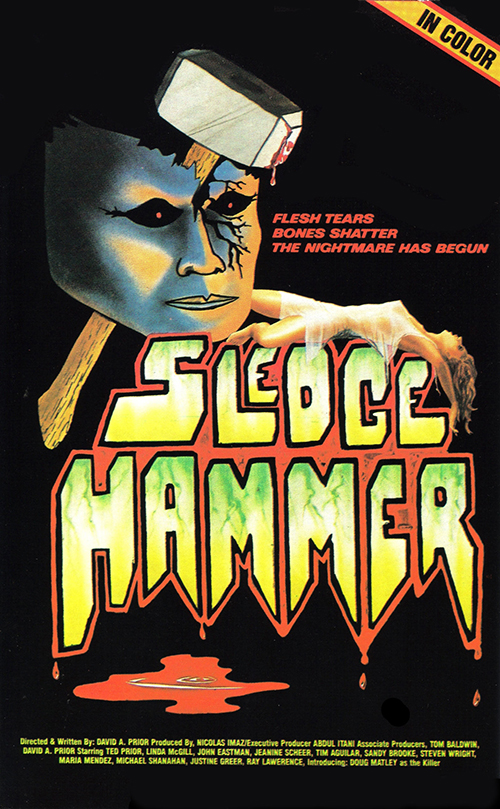
I could continue to criticize the film easily. However, something about it ended up being quite fun. It isn’t a good movie by any reasonable metric – yet I enjoyed my time with it. That begs the question of how we define a “good” movie, though, doesn’t it? Joe Bob’s commentary throughout the night articulates that idea to a degree. The film is not technically good, but it exists. It is the effort of someone genuinely having fun and making something, and we are partaking in that joy. It may not be in the way intended by Prior, but here we are, over 30 years after Prior’s friends made it, watching it as a community and pulling something from it. It’s not unlike The Room or that Monkey Christ incident where we see the earnestness of the intent and do find a kind of enjoyment in bearing witness to it, though the quality itself may be lacking or laughable.
Perhaps the highlight of the host segments was discussing the VHS form and aesthetic, particularly why there is something so comforting about them. Essentially, Joe Bob reasons that there is something about the “dot pattern that lulls you into a comfort zone” of familiarity. When we watch such VHS horror, we find ourselves reading them as home movies in a way, and can project people we know into the film. This is definitely part of that larger communal reading.
Among some of the other fun bits during the host segments, we learn a fun assemblage of the history of the film – in one of the more impressive feats, Prior shot it in a two-bedroom house. Yet, it ends up feeling much larger in the final film, mostly due to a baffling number of door opening sequences, I suspect. There was also a fun history of aerobic-themed horror films, which frankly sounds like a nice double-feature for season four. Of course, there was also some of that classic poking of fun at academia and horror, which I have grown immune to – it is always a fun time when Joe Bob mentions semiotics.
It is hard to rate a movie like Sledgehammer where the end product is bad, but you enjoy it. Joe Bob gave it two-and-a-half stars, even noting he was being “generous.” His rating, I feel, reflects that dichotomy of recognizing the movie is bad but still finding enjoyment from it. I guess if I had to force a food metaphor if most of the movies on The Last Drive-In are junk food, Sledgehammer is like that gas station taquito you can’t help eating once a month. So while I can only give this movie a one out of five Cthulhus when it comes to the quality of the film, it is certainly worth experiencing at least once.
 (1.5 / 5)
(1.5 / 5)
Best Line: “BLARGHARBLE.” – Chuck’s “Bill Murray” Impression
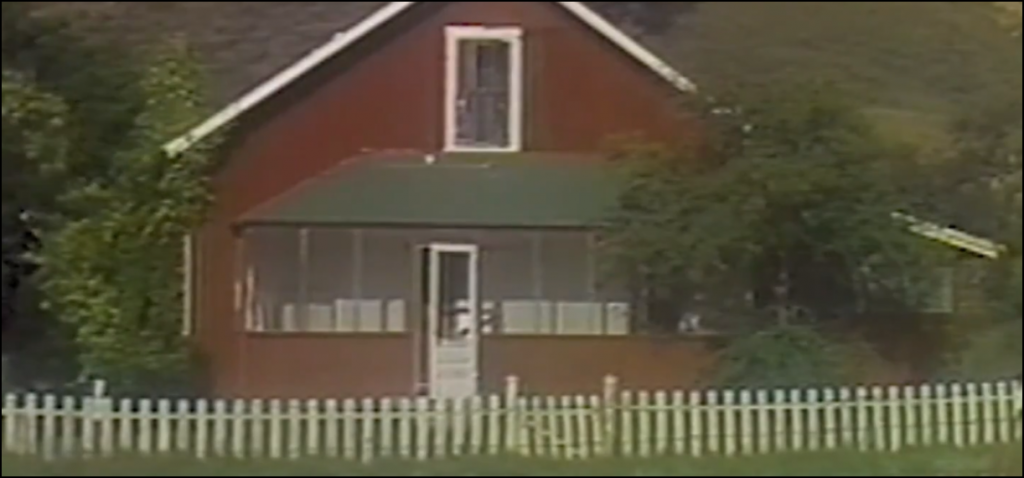
Things (1989)
They are pretty chill about the dead woman upstairs, all things considered.#thelastdrivein @therealjoebob @kinky_horror @shudder— Haunted MTL 🏳️🌈 (@HauntedMTL) June 5, 2021
Opening: We’re about to go on a trip.
Muddy and dimly lit. Tinny and grating dubbing. Incoherent and minimal story. This is the infamous “classic” Things. But, believe it or not, The Last Drive-In can dig deeper and find an even worse movie for the back half of the night. This Canadian independent horror film, already a sign of danger, was shot direct-to-video – specifically on Super 8. Directed by Andrew Jordan, who co-wrote it with Barry J. Gillis, the movie stars Barry J. Gillis, porn star Amber Lynn, Bruce Roach, and Doug Bunston.
The film follows two friends who visit a friend’s cabin, only to uncover a horrific experiment… I think? The plot of Things is tough to discern for many reasons. Perhaps the best description of the intended plot I could find is on IMDB:
An impotent husband, driven by a fanatical desire to father children, forces his wife to undergo a dangerous experiment. The result: the birth of a multitude of monstrous THINGS.
There is a story to be found, but the film takes every opportunity it can not progress the story. First, long sequences of poorly dubbed conversations, cheese sandwich making, and wandering around darkened rooms with a flashlight. These long stretches are periodically punctuated by Halloween prop ants or some ham-fisted gore effect. Then, of course, there are the Amber Lynn sequences that have no plot relevance – where she plays a news reporter sitting in front of an A/V shelf, reading cue cards that are obviously off to the side of the camera.
The movie has so many problems that talking about them would just come off as bullying someone who cannot fight back. Such as the case with one character vanishing for well over a half-hour of the runtime because Bruce Roach couldn’t be on set. With that being said, I do feel I need to point out the absolutely hilarious dub. Much like that MST3K classic, Manos: The Hands of Fate, Things is entirely dubbed over. Unlike Manos, which the crew was unable to record audio when it was shot due to the lack of sound equipment, Things had to be dubbed over because of too much talking on set. This is important as to why Things, as bad as it is, is ultimately compelling. With that being said, the dub on Things is awful in the most hilarious way imaginable – line reads are frequently slurred, rushed through, or completely inappropriate to what is going on. Even better is when a line is spouted, which was obviously added in post, such as Don’s hilarious bitching about the weight of his friend or maple syrup references.
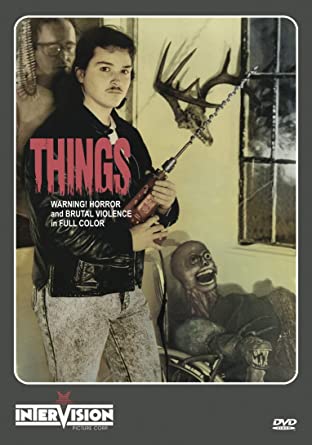
Joe Bob’s host segments featured a special appearance by a friend of the Drive-In and AEW superstar Chris Jericho, likely future recipient of his own dedicated land-line for Canadian horror. He’ll be the next Felissa Rose on the show, only consulting on canucks rather than mangled dicks. Jericho’s interview segment was by far the most naturalistic of the season, and his utter contempt for Things was quite funny. However, his attempts to disown the film as a product of Canada are not likely to pan out. Outside of this, most of the segments would begin with a series of questions attempting to parse the film’s meaning and what was seen on screen. Unfortunately, few of the answers were found. Some of the factoids worked their way in from the confused delirium: how exactly Amber Lynn became involved (they asked her) and who the nude woman was (a sex worker).
Joe Bob’s impassioned speech at the end of the episode is key to the night. Both films are rightly terrible, with Joe Bob giving Things a one-star rating. Things seems to be the only movie on the show so far that has earned that dubious honor. Yet, as Joe Bob says in the conclusion of the night, the evening was a celebration of the little guy. Things is a movie that exists, a tangible thing made by someone outside the traditional pipeline of film. It is far from competent, but at least someone poured their passion into it. It is easy to judge a film as bad, but it is quite another to actually make an independent film, which should be celebrated when it happens. As for my own rating from quality alone, I would only give the film one of five Cthulhus. However, much like Sledgehammer, I am glad to have seen it.

Best Line: “Susan! They ate her down to the skull!” – Don, upon seeing the Things have eaten Susan down to the skull.
Haunted MTL Drive-In Totals
Of course we are going to include the standard Drive-In Totals, as shared by the Shudder Twitter account.
Sledgehammer Fu in a movie called #Sledgehammer? Ya don’t say. #TheLastDriveIn pic.twitter.com/tyxafeN0QY— Shudder (@Shudder) June 5, 2021 1 Completely Nekkid Surrogate Mother Wearing a Devil Mask, with Beard and Eyebrows and Dog Tags Between Her Breasts. 🤔 #TheLastDriveIn pic.twitter.com/6gbB43PDfe— Shudder (@Shudder) June 5, 2021
And as for our totals we have:
- 2 mailbag entries
- “$350,000” Budget
- The 8th dead dog of the season
- 4 breaks per movie
- 37 David Prior movies
- Gratuitous Canadian references
- “Creepy Neighbor” caps
- Tracking Fu
- Existential Questioning about what we are seeing Fu
- Yuki sighting
- Spontaneously disappearing actor
- Silver Bolo Award: SOV Horror
- Darcy Cosplay: Sledgehammeress and Blockbuster Darcy
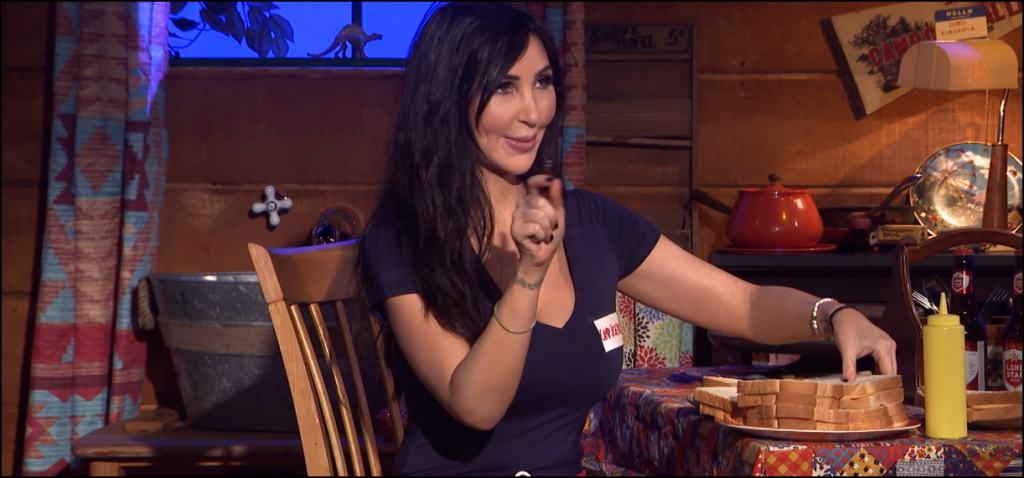
Episode Score
The movie selection tonight was terrible, yet the episode is larger than the sum of its parts. I hope that VHS night becomes a thing every season as there are so many VHS films out there that could easily find their way into the show. I think a celebration of the earnest but incompetent is something we could benefit from as horror fans from time to time. With any luck, nights like this might inspire someone to make their damn movie. The average mutant carries an entire film studio on their phone these days. Perhaps a few years down the line, they will be talking about the Mutant Renaissance?
Anyway, one star movies but a five star night. I give this episode of The Last Drive-In five out of five Cthulhus.
 (5 / 5)
(5 / 5)
And with that, I am out. Join us on Twitter next week as we live-tweet the penultimate episode of the season. It’s gonna be a good time.
Porn stars talking horror… I wonder if there is a market for that?
Nah. 😏#thelastdrivein @therealjoebob @kinky_horror @shudder— Haunted MTL 🏳️🌈 (@HauntedMTL) June 5, 2021
David Davis is a writer, cartoonist, and educator in Southern California with an M.A. in literature and writing studies.

You may like
Movies n TV
Wicked City (1987), a Film Review
Wicked City (1987) is a dark fantasy horror animation following a world at the brink of war as mortals and supernatural being clash.
Published
1 day agoon
October 22, 2024
Wicked City (1987) is a dark fantasy horror and the debut feature-length animation of director Yoshiaki Kawajiri. This unrated film adapts the first novel of the Wicked City series, Black Guard. It stars Yûsaku Yara, Toshiko Fujita and Ichirô Nagai. As of this review, Wicked City is available on Prime and Crunchyroll.
As the peace between the mortal and supernatural worlds ends, forces clash in a plot to establish a new order. Tasked with protecting the best chance for peace, Taki (Yûsaku Yara) must guard Giuseppe Mayart (Ichirô Nagai). A Black Worlder named Makie (Toshiko Fujita) remains his partner in this pursuit. Can the three brave the challenges and establish a world of peace?
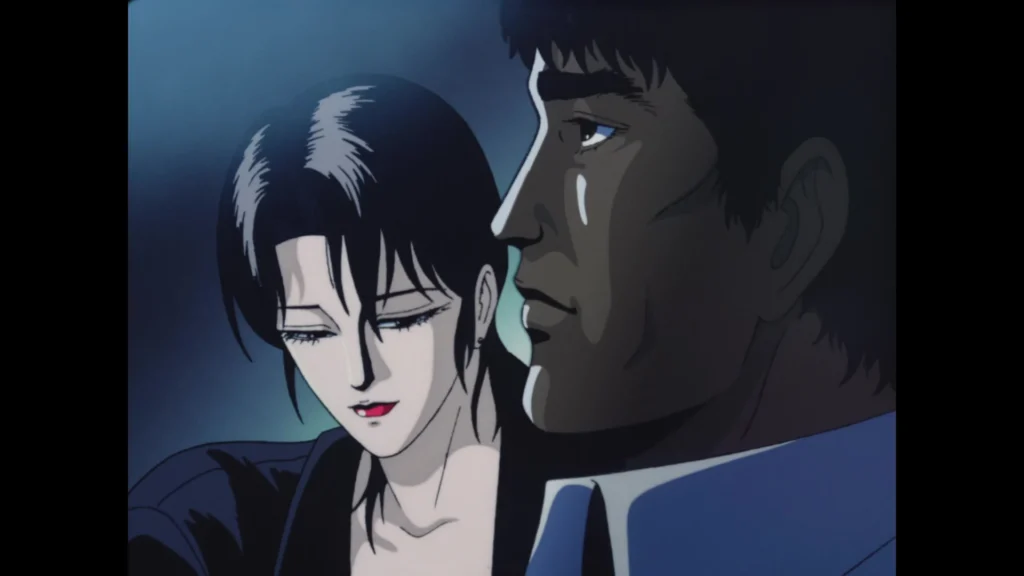
What I Like about Wicked City
Wicked City works best in its parts, providing strong and interesting elements that don’t inherently add up to the whole. The art style and design evoke a memorable aesthetic. There’s a charm to this 80s-era anime that creates either an environment for abominations or spectacles.
It makes sense that Wicked City is an adaptation because the plot depicted seems like parts of a larger narrative we do not see in the film. From what remains, the world and political scheming seem worth exploring. Unfortunately, little of this plot receives depth.
Prior to this, Yoshiaki Kawajiri contributed to many TV shows, exercising a new muscle as he directed a film-length work. He seems invaluable on a team, as his filmography and success indicate, but his directorial contributions don’t seem as critically successful. This effort and work best express themselves in the level of animation and scenes depicted in this flawed film.
Despite the missing pieces throughout the film, the ending seems complete. While there’s clearly room for a sequel, Wicked City tells its story and suggests an answer to the new era’s direction.
Supposedly, this started out as a short film, but Yoshiaki Kawajiri’s execution earned enough attention and respect to get a green light for a feature-length film. This work was all done within a year. Assuming this is true, Wicked City’s completion and animation quality deserve respect.
It received a live-action adaptation. From my understanding, the film adapts the anime, but I hope and imagine some of the manga gets explored to make a more functioning plot.

Tired Tropes and Triggers
Sexual assault and rape remain grotesquely overused in the film. Such subject matter has a place in art, but its use in Wicked City gravitates more toward exploitation and spectacle. Many of the visual designs make most of the fight allegories for sexual assault atop the actual assaults.
As most creatures are organic, there’s a heightened amount of body horror. There’s a level of separation in animation as opposed to live-action body horror, but this point certainly applies to those sensitive to such material.
From what we learn of the characters, many decisions directly contradict their supposed purpose.
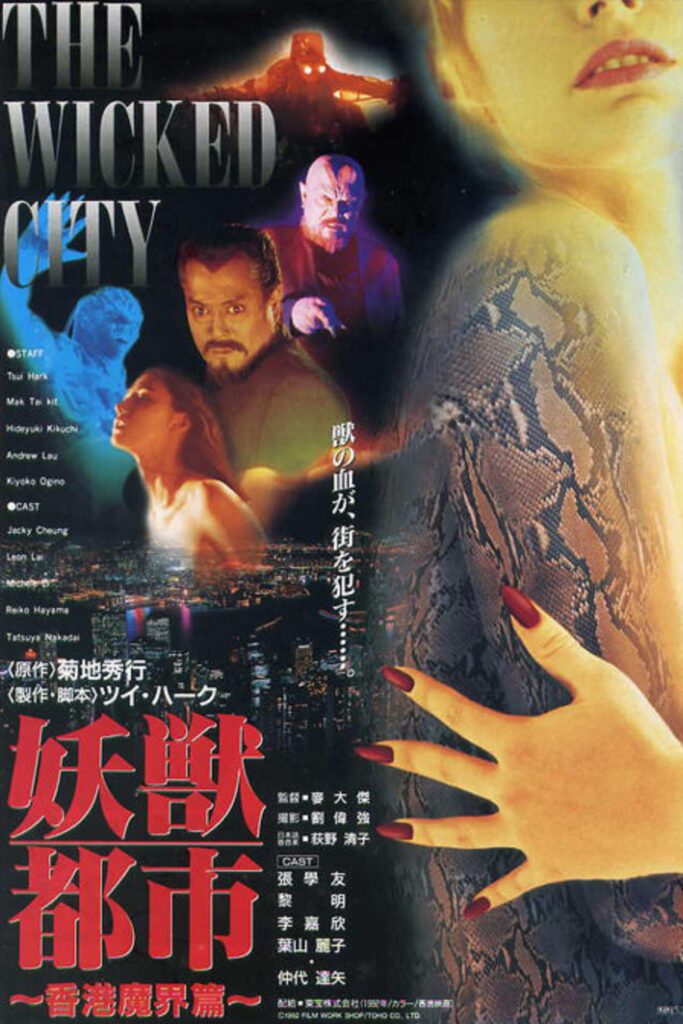
What I Dislike about Wicked City
Wicked City circles forums and rank-listings as a cult classic or niche horror, but it’s flawed in almost every way. Ideally, such works might have a plot that draws one in. Wicked City has a concept of a plot that evokes interest but doesn’t communicate it well or explore its depths. Ultimately, it’s a film made up of its parts. The good gets outweighed by the dysfunctional points.
Frankly, the romantic tension between the two leads is underdeveloped. I hesitate to say it doesn’t exist because there’s some work implemented with this in mind. Viewers note the work in the film, but it lacks polish or sensibility.

Final Thoughts
Wicked City is a flawed work from a successful animator. If given more time to develop, perhaps a staple of the 80s might exist. Unfortunately, the film has merits in its parts but falls in connection to the whole. However, for those who can overlook the limitations and exploitations, there are many worthy parts that excel in terms of animation quality and creative decisions.
Released in 2023, Late Night with the Devil is a found-footage movie about a late-night host who’d do anything to have the top-rated show.
Don’t worry, it’s not about Jay Leno.
The story
Our story begins, as many found footage films do, with a quick explanation. What we are going to see is the surviving footage from the last episode of a late-night show, along with some never-before-seen footage of backstage during the fateful night everything went wrong.
We then meet Jack Delroy. He’s a late-night host of the show Night Owls. And a year after the death of his beloved wife, he worries that his show is going to be canceled. The ratings are freefalling. So, on Halloween, he invites a girl named Lilly on the show who claims to be possessed.
Because that’s going to go well.
The show begins with a monolog, like most late-night shows. We then meet the first two guests, a claimed psychic named Christou and a stage magician slash skeptic named Carmichael Haig. After hot-reading the audience, Christou appears to have a real psychic vision. One that involves Jack’s deceased wife. He then proceeds to vomit black sludge all over the stage.
You’d think that would be the end of things. It would be stupid to still bring on the possessed girl after a warning like that.
But, of course, the show must go on.
What worked
Late Night with The Devil dedicated itself to the found footage vibe. As such, it felt very much like you were watching something from the 70s. The whole movie is at a lower, grainy resolution, unlike some other horror films that eventually and subtly switch out for a more modern and clear picture. The clothes, the music, the cheap and cheesy costumes. It all reminds one of a good episode of the Brady Bunch or Bewitched. Even when someone’s puking black blood or has worms pouring out of their freshly opened gut.
I was also quite impressed by the acting in this film. Especially that of David Dastmalchian, who played Jack Delroy. This role was performed to perfection. Jack manages to come off as a kind, compassionate man. The sort of person you’d be comfortable talking to, even about the most horrible moments of your life. You get the feeling that you could tell him about the worst moments of your life and he’d thank you for sharing.
This kind facade never slips. But we also see his true motivations. He doesn’t care about anyone, no matter how kind he acts. The show must go on is his entire drive and mission. He didn’t let a little thing like a guest dying stop him. Or a mental breakdown on stage. Or even his dead wife calling to him from beyond the grave.
The show must go on. And on, and on.
Even Dastmalchian is outshined, however, by Ingrid Torelli who played Lilly.
Lilly was a creepy character from the first time we saw her. There is something so unnerving about a child who knows far more than they should. This is a hallmark of demon possession films, all the way back to Reagan. But there’s also something else about the way she behaves that has little to do with the possession. She is always looking to either June or Jack for direction. As much as she speaks to the adults like she knows one, she is still always looking to please the adults around her. She is eager to look at the right camera at the right moment. She is eager to be obedient. It’s hidden, but for someone who has seen enough cult content, it’s easy to spot. She played a former cult victim very well. And that was perhaps the most terrifying part of that character.

What didn’t work
This was almost a perfect movie. Then, like so many others, it just couldn’t stick the landing.
Near the end of the film, there is a strange scene that doesn’t seem to mesh with the rest of it. It appears to be a collection of Jack’s memories. Whether they are true memories or not is left to our interpretation. But they explain the entire reveal of the whole movie. In dull, excruciating detail.
This series of scenes was insulting. It was the equivalent of asking someone if they got the joke. But are you sure you got it? Wait, let me explain it and really just kill the effect altogether.
We were already laughing. Or, to step away from this metaphor, we were already creeped out. We were already grossed out. We were already living in the scene, sitting in the audience right next to the lady who lost her son or the man dressed as a skeleton. Rather than explain the twist, which didn’t need explaining, this scene pulls us rudely out of that audience and deposits us back in the real world.
All that being said, Late Night with The Devil is still a terrific horror film. It was dark, it was gorey, and it left us with unsettling questions even after the ill-planned info dump. If it isn’t already on your Halloween watch list, it certainly deserves a spot.

Movies n TV
“B is for Brain” (Evil: S2E8)
“B is for Brain” is an episode of the supernatural drama Evil. The assessors investigate new brain mapping research.
Published
2 days agoon
October 21, 2024
“B is for Brain” is an episode of the supernatural drama Evil, created by Michelle King and Robert King. The central cast includes Katja Herbers, Mike Colter, Aasif Mandvi, Michael Emerson, Christine Lahti, and Andrea Martin. It originally aired under CBS before moving to Paramount+. As of this review, it’s available through Netflix and Paramount+ and its add-ons.
The assessors investigate new brain mapping research that might expose others to God and Hell. Kristen (Katja Herbers) struggles with aggression as Andy (Patrick Brammall) returns from his expedition. Ben (Aasif Mandvi) struggles with what he sees while in the brain mapping process. David (Mike Colter) returns to the basics to find God.
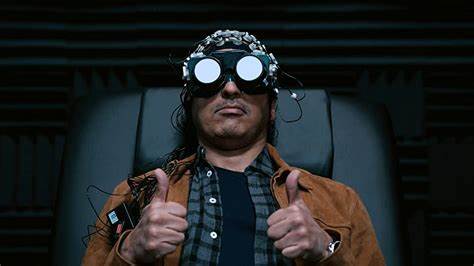
What I Like about “B is for Brain”
“B is for Brain” provides a unique opportunity for viewers to gain more insight into Ben’s past. While not his episode, as “B is for Brain” balances the leads nearly perfectly, he has his most emotional moment in the series so far. Despite the lower stakes, it provides a more vulnerable moment than “E is for Elevator.”
Leland (Michael Emerson) and Sister Andrea (Andrea Martin) meet again on more equal terms and establish their hostile relationship. Sister Andrea proves herself to be a woman who doesn’t back down when a Satanist tries to intimidate her. It also raises the necessity of David’s training, creating a more tangible threat.
Kristen’s deteriorating relationship with Andy reaches a boiling point as her impulsiveness and hostility reach new heights. It seems her sabbatical to the monastery might have increased the evil influences. “B is for Brain” builds upon what “S is for Silence” introduces and creates an interesting interpretation of the last episode’s events.
“B is for Brain” brings a new dynamic to its horror by focusing on how technology, science, and religion intersect. There’s an incredibly diabolical conversation on how this technology could induce fear to empower religion. This idea evokes a more subtle horror than most episodes.

Tired Tropes and Triggers
There is a potential nay-theist trope. By that, I mean there’s a single line where one can interpret an atheist character turned from God because God turned from them. It’s a single line that remains interpretable, but it’s worth mentioning.
There’s a moment of self-harm with clear implications that this is a pattern with the specific character. This harm has some implication of demonic influence, but this remains unconfirmed at the moment. I will mention this becomes more obvious as the season continues.
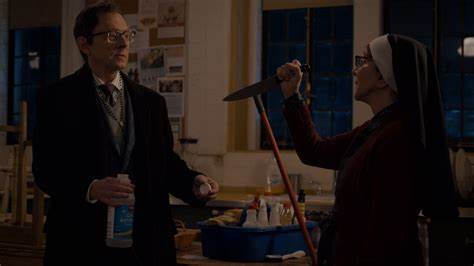
What I Dislike about “B is for Brain”
Unfortunately, such a big reveal for Ben’s character doesn’t have time to get fully explored in “B is for Brain.” While the focus between the three is great, a few big reveals only earn a light address. It’s less that Ben doesn’t get a fair amount of attention and more that these subjects don’t receive that attention.
A similar point remains relevant about the claim of using brain mapping as a way of evoking religious conversion. That point merits interrogation from the characters and the plot, but it’s only lightly touched on. Further expanding these points is that there’s only light reference in the future specifically about brain mapping.

Final Thoughts
“B is for Brain” gets placed into two memorable episodes, diminishing its lasting power. While not a fault of the episode, it does overlook some potentially big reveals. Some of the more relevant character moments will receive the attention they deserve in later episodes, but it doesn’t aid “B is for Brain” in execution. While a strong and enjoyable episode, diving into those moments might have created an episode that haunts the viewer.

